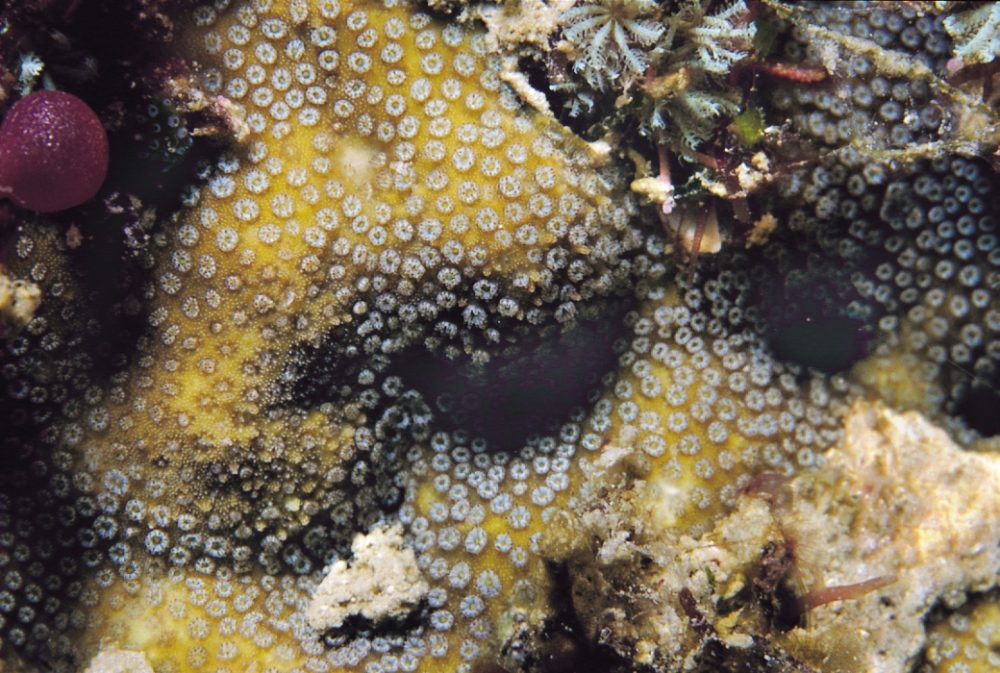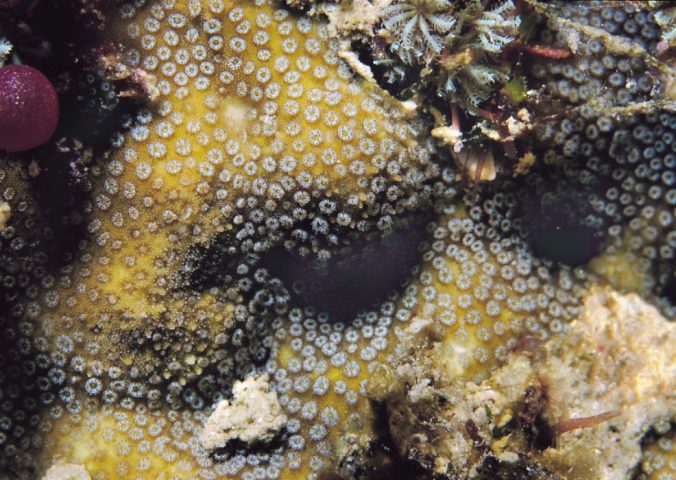About
Stylocoeniella cocosensis is a widespread but rare coral with a preference for shallow waters and rocky overhangs.
It is limited to a depth range of just 10m where colonies can reach 10cm in diameter. This species is particularly susceptible to coral bleaching and disease due to its restricted depth range and also suffers from extensive reduction of suitable reef habitat.
Although resident in regions of high human impact, there has been little research to identify the threats facing this species.
- Order: Scleractinia
- Family: Astrocoeniidae
- Trend: unknown
- Colony Size: up to 10cm
- Depth Range (m): 2 - 10
EDGE Score
Distribution
This coral is found in tropical waters across the central Indian and Pacific Oceans including around remote islands such as Christmas and Cocos islands.
Habitat and Ecology
Very little is known about the ecology of this reef building coral. It occurs in shallow reef environments down to a depth of 10m, where S.cocosensis is known to prefer the shelter of overhangs and crevices in the upper fore reef.
As with most hard corals, this species is a zooxanthellate organism meaning that it houses a small photosynthetic algae (zooxanthellae) through which it obtains energy.

